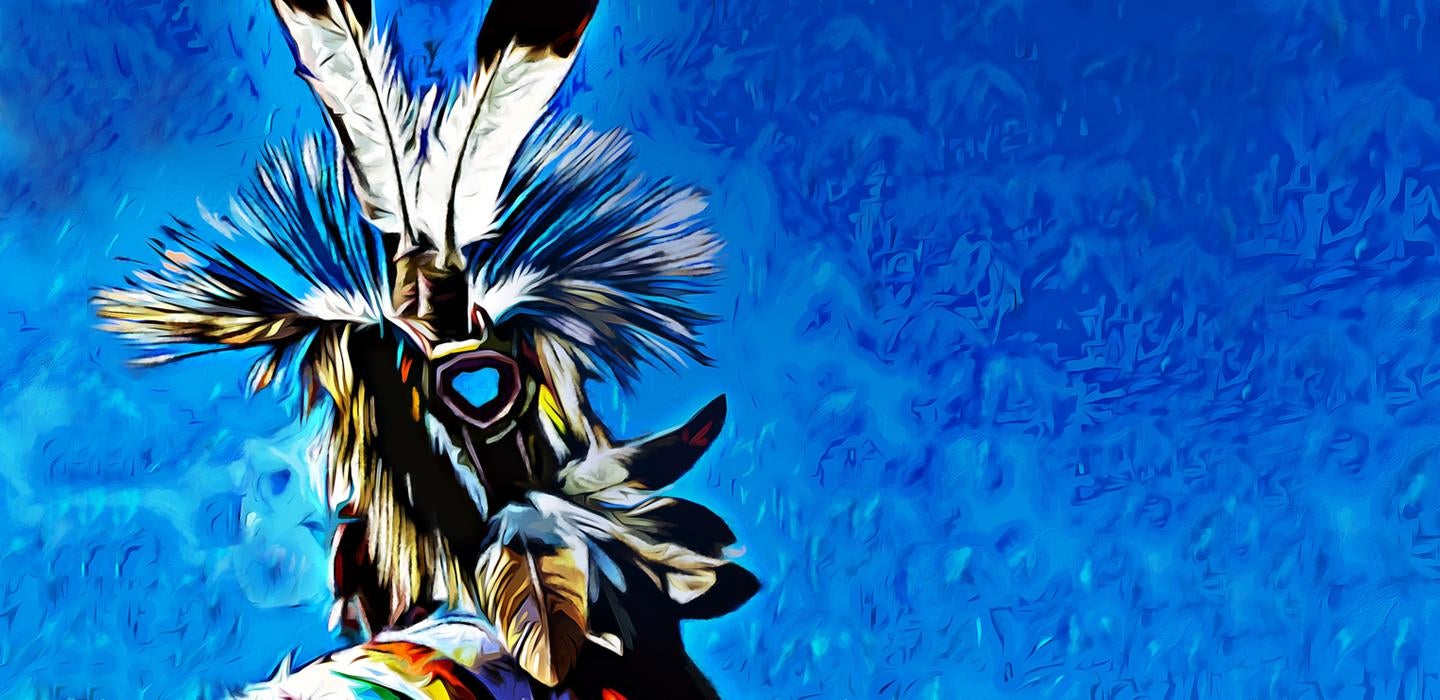
Subscribe to Pittwire Today
Get the most interesting and important stories from the University of Pittsburgh.Pitt’s first-ever Indigenous Cultural Festival will begin Monday, Sept. 19, with exhibits at two locations on the Pittsburgh campus and end with a community powwow.
The Office for Equity, Diversity, and Inclusion-backed initiative is co-led by Pitt political science assistant professor and Choctaw Nation member Tessa Provins in partnership with Council of Three Rivers American Indian Center (COTRAIC) representative Michael Simms. The two spent the last four months coordinating with a team that united Pitt, COTRAIC and stakeholders from the broader community.
“This will bring something to the University that we've been missing,” said Provins, whose research analyzes how American legislative institutions and policies impact underrepresented groups.
“Many came together to put this on, and it’s important for Pitt to be recognizing and building strong ties with the Indigenous community locally and in Southwestern Pennsylvania to educate the Pitt community about the cultures of and contemporary issues faced by Indigenous people.”
The complete festival schedule is available online; registration is required for some events. Activities will include lessons on Indigenous art and history, exhibit displays in Pitt’s Global Hub and Hillman Library, a virtual discussion about restructuring museums and more.
A Sept. 21 powwow with singing, dancing and drumming will feature traditional performances from different tribes, Indigenous vendors and remarks from tribal elders. Simms said the event will welcome tribal representation from the U.S. and Canada.
“I see this event as a chance to have a working relationship with the University of Pittsburgh,” said Simms. “We need more relationships like this throughout the city to give us the ability to share our culture and bring awareness that we as Indigenous people still live in Pittsburgh. It's important that we get noticed like all other cultures.”
The festivities will conclude at the COTRAIC facility in Dorseyville on Sept. 24 and 25 with the center’s 43rd Annual Powwow, which has historically welcomed over 500 different nations. Free transportation will be provided for Pitt students from campus.
A long time coming
“This festival is the beginning of something bigger,” Provins said. One Pitt alumna is hopeful this will be the case.
Lisa Mittens (A&S ’77, SCI ’83G) is a Pittsburgh native and Mohawk tribe member who spent her time at Pitt fostering a deeper connection to her Indigenous heritage. As a student, she personalized her educational path by self-designing her major around Native American studies and languages. She was also a founding member of the Native American Student Organization.
After seeing a Pitt News ad early in her collegiate career, she joined COTRAIC and later worked in the organization’s cultural library — an experience that would inspire her to pursue a Master of Library and Information Science degree at Pitt.
[Student-led Relearn Our Land initiative encourages advocacy and equity]
“I took whatever [courses] I could find scattered about the University at the time on Native studies in anthropology, history, linguistics,” said Mittens, who commended the Hillman Library’s “extraordinary collection of Native materials, spearheaded by the anthropology department’s Hazel Johnson. She, with a few anthropology faculty members, built a very extensive collection of materials on Native studies. It was very rich, given the lack of Native-focused courses.”
In 1986 Mittens returned to Pitt, replacing Johnson as the University’s anthropology bibliographer, and spent the next 14 years building up the Native studies collection. Twenty-two years later, she said the festival represents the promise of a renewed focus on the Indigenous population in the area.
“This initiative and focus on Indigenous and Native peoples is overdue, but I’m impressed and happy to see more attention being paid to the presence here,” she said.
A modern presence
Miguel Sague, a Taíno tribe member, is on the COTRAIC board of directors and is part of its speaker’s bureau. He emphasized that the festival would help educate people about the modern presence of Indigenous peoples.
“What you will see there is not what you used to see in the 1800s,” he said, noting modern regalia attendees might encounter. “Our culture has evolved a lot. We Native American people live in the 21st century. We’re not museum pieces; we’re human beings.”
Like Mittens, Sague and his wife were in search of community and a chance to serve their Indigenous brothers and sisters in Pittsburgh during the 1970s. Sague recalled maneuvering his Ford Galaxie 500 along the winding dirt roads of Dorseyville until the COTRAIC, nicknamed “singing winds” for its hilltop location, came into view. As Russell Simms, the center’s current executive director, put down his tools from working on the building to welcome the couple, Sague knew he was home.
“The center has been a source of pride for us,” said Sague. “We've gathered groups as small as 15 people up to hundreds. We host community days which see younger people come and learn, so traditions are passed on to other generations. The powwow and [now, festival] is a way for Indigenous people to demonstrate who we are and that we're still around.”
Provins added, “This week is about connecting the Pitt community with the local Indigenous community to start that learning process.”
— Kara Henderson, illustration by Amy Kleebank


